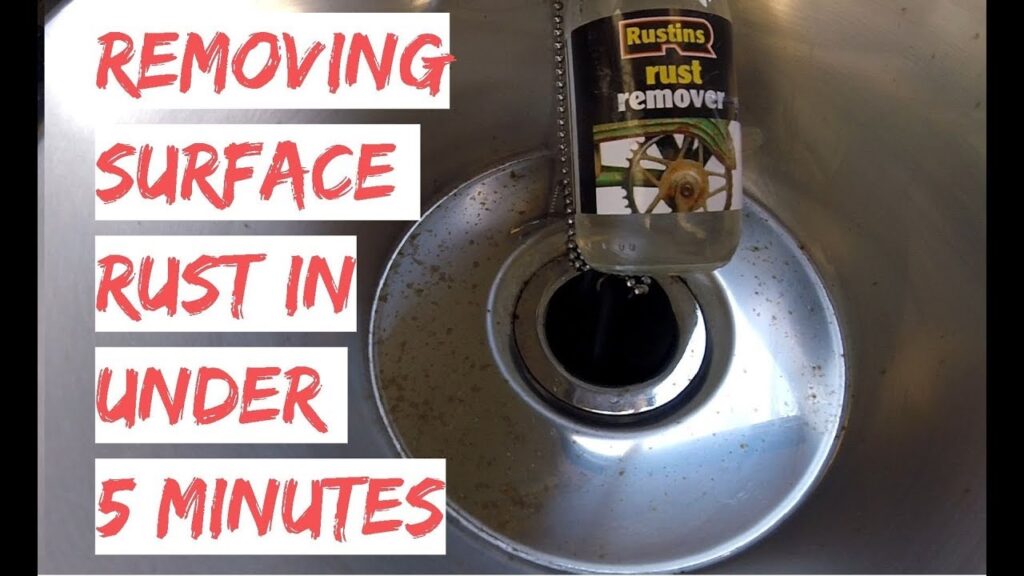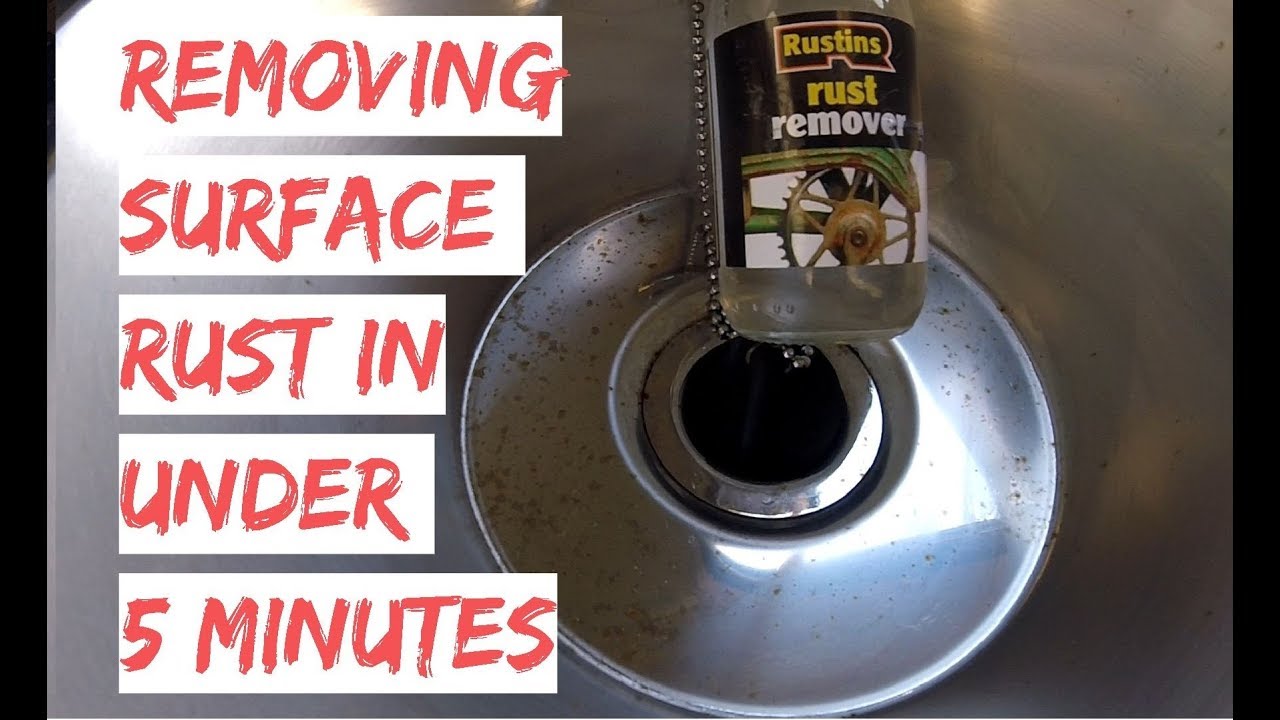
The Definitive Guide on How to Remove Surface Rust Effectively
Surface rust, that unsightly reddish-brown coating, is the bane of many a metal object’s existence. From cars and tools to outdoor furniture and household appliances, rust can quickly diminish both the aesthetic appeal and structural integrity of your belongings. Understanding how to remove surface rust effectively is crucial for maintaining your possessions and preventing more serious corrosion. This comprehensive guide will walk you through various methods, tools, and preventative measures to tackle surface rust head-on.
Understanding Surface Rust
Before diving into the removal process, it’s important to understand what surface rust actually is. Rust is a form of corrosion that occurs when iron or steel is exposed to oxygen and moisture. This chemical reaction forms iron oxide, the familiar reddish-brown substance we recognize as rust. Surface rust, as the name suggests, is rust that is confined to the outer layer of the metal. While it might seem superficial, if left untreated, it can penetrate deeper into the metal, causing significant damage.
The Science Behind Rust Formation
The formation of rust is an electrochemical process. Iron atoms on the surface of the metal lose electrons to oxygen atoms in the presence of water. These iron atoms become iron ions, which combine with oxygen and water to form hydrated iron oxide (rust). Electrolytes, such as salt, can accelerate this process, which is why cars in areas with salted roads are particularly susceptible to rust.
Methods to Remove Surface Rust
There are several methods to remove surface rust, each with its own advantages and disadvantages. The best method for you will depend on the size and location of the rust, the type of metal, and the tools you have available.
Mechanical Removal
Mechanical removal involves physically removing the rust using abrasive tools. This is a common and effective method, especially for larger areas of rust.
- Sanding: Sandpaper is a versatile tool for removing surface rust. Start with a coarse grit sandpaper (e.g., 80-grit) to remove the bulk of the rust, then gradually move to finer grits (e.g., 120-grit, 220-grit) to smooth the surface. Always wear a dust mask and eye protection when sanding.
- Wire Brushing: Wire brushes, either manual or powered, are excellent for removing loose rust and scale. They are particularly useful for irregular surfaces and hard-to-reach areas. Be careful not to apply too much pressure, as this can scratch the metal.
- Grinding: Angle grinders with abrasive discs can quickly remove surface rust from large, flat surfaces. However, they can also remove a significant amount of metal, so use them with caution. Always wear safety glasses and hearing protection when using an angle grinder.
- Sandblasting: Sandblasting involves using compressed air to propel abrasive particles at the rusted surface. This is a very effective method for removing even stubborn rust, but it requires specialized equipment and a controlled environment.
Chemical Removal
Chemical removal involves using chemical solutions to dissolve or convert the rust. This can be a less labor-intensive option than mechanical removal, but it requires careful handling of chemicals.
- Vinegar: Vinegar (acetic acid) is a mild acid that can dissolve rust. Soak the rusted object in vinegar for several hours or overnight. Then, scrub the remaining rust with a wire brush or scouring pad.
- Citric Acid: Citric acid, available in powder form, can be mixed with water to create a rust-removing solution. Soak the rusted object in the solution for several hours, then scrub with a brush.
- Commercial Rust Removers: There are many commercial rust removers available, formulated to dissolve rust quickly and effectively. Follow the manufacturer’s instructions carefully when using these products. Many contain harsh chemicals, so wear gloves and eye protection.
- Evapo-Rust: This is a popular and environmentally friendly rust remover. It’s non-toxic, biodegradable, and reusable. Simply soak the rusted object in Evapo-Rust, and it will selectively remove the rust without harming the underlying metal.
Electrolytic Rust Removal
Electrolytic rust removal, also known as electrolysis, uses an electric current to separate the rust from the metal. This method is particularly effective for intricate or delicate objects that are difficult to clean mechanically. It requires a battery charger, a plastic container, washing soda (sodium carbonate), and a sacrificial anode (e.g., a piece of scrap steel).
- Fill the plastic container with water and dissolve the washing soda in it.
- Place the rusted object in the container, making sure it doesn’t touch the sacrificial anode.
- Connect the positive terminal of the battery charger to the sacrificial anode and the negative terminal to the rusted object.
- Turn on the battery charger. Bubbles will form around the rusted object as the electrolysis process occurs.
- Allow the process to continue for several hours or overnight.
- Remove the object from the container and rinse it thoroughly. The rust should have been converted into a black sludge that can be easily scrubbed off.
Preventing Surface Rust
Prevention is always better than cure. Taking steps to prevent surface rust from forming in the first place can save you time, effort, and money in the long run.
- Keep Metal Surfaces Clean and Dry: Moisture is a key ingredient in the formation of rust. Keep metal surfaces clean and dry, especially after exposure to rain or humidity.
- Apply Protective Coatings: Protective coatings, such as paint, primer, and rust inhibitors, create a barrier between the metal and the environment, preventing rust from forming.
- Use Rust Inhibitors: Rust inhibitors are chemicals that slow down the corrosion process. They can be applied as sprays, liquids, or coatings.
- Store Metal Objects Properly: Store metal objects in a dry, well-ventilated area to minimize exposure to moisture.
- Regular Maintenance: Regularly inspect metal objects for signs of rust and address any issues promptly. Early intervention can prevent minor surface rust from developing into more serious corrosion.
Specific Preventative Measures
- For Cars: Regularly wash and wax your car, especially during the winter months when roads are salted. Consider applying a rust-proofing treatment to the undercarriage.
- For Tools: Clean and dry your tools after each use. Apply a light coat of oil or rust inhibitor to prevent rust. Store them in a toolbox or other dry container.
- For Outdoor Furniture: Cover your outdoor furniture during the off-season. Consider using furniture covers that are breathable and water-resistant.
Choosing the Right Method for You
Selecting the appropriate method to remove surface rust requires careful consideration of several factors. The severity of the rust, the type of metal affected, and the available resources all play a significant role in the decision-making process. For instance, delicate items or intricate designs might benefit from chemical or electrolytic rust removal methods, which are less abrasive than mechanical options. Conversely, large, flat surfaces with heavy rust buildup might be better suited for mechanical methods like grinding or sandblasting. Cost is another important factor. Chemical rust removers are generally more affordable than sandblasting equipment, but the latter might be more efficient for large-scale projects. Ultimately, the best method is the one that effectively removes surface rust while minimizing damage to the underlying metal and aligning with your budget and skillset.
Safety Precautions
When removing surface rust, it’s crucial to prioritize safety. Always wear appropriate personal protective equipment (PPE), including safety glasses, gloves, and a dust mask or respirator. When working with power tools like grinders or sandblasters, hearing protection is also essential. Ensure adequate ventilation when using chemical rust removers, as some may release harmful fumes. Follow the manufacturer’s instructions carefully and dispose of waste materials responsibly. If you’re unsure about any aspect of the rust removal process, consult a professional.
Conclusion
Removing surface rust is a manageable task with the right knowledge and tools. By understanding the causes of rust, choosing the appropriate removal method, and taking preventative measures, you can protect your metal objects and keep them looking their best. Whether you opt for mechanical abrasion, chemical solutions, or electrolytic processes, remember to prioritize safety and follow best practices. With a little effort, you can effectively combat surface rust and preserve the longevity of your valuable possessions. Don’t let rust win – take action today and remove surface rust effectively!
[See also: Preventing Rust on Metal Surfaces]
[See also: Best Rust Removal Products on the Market]
[See also: How to Restore Rusted Tools]

